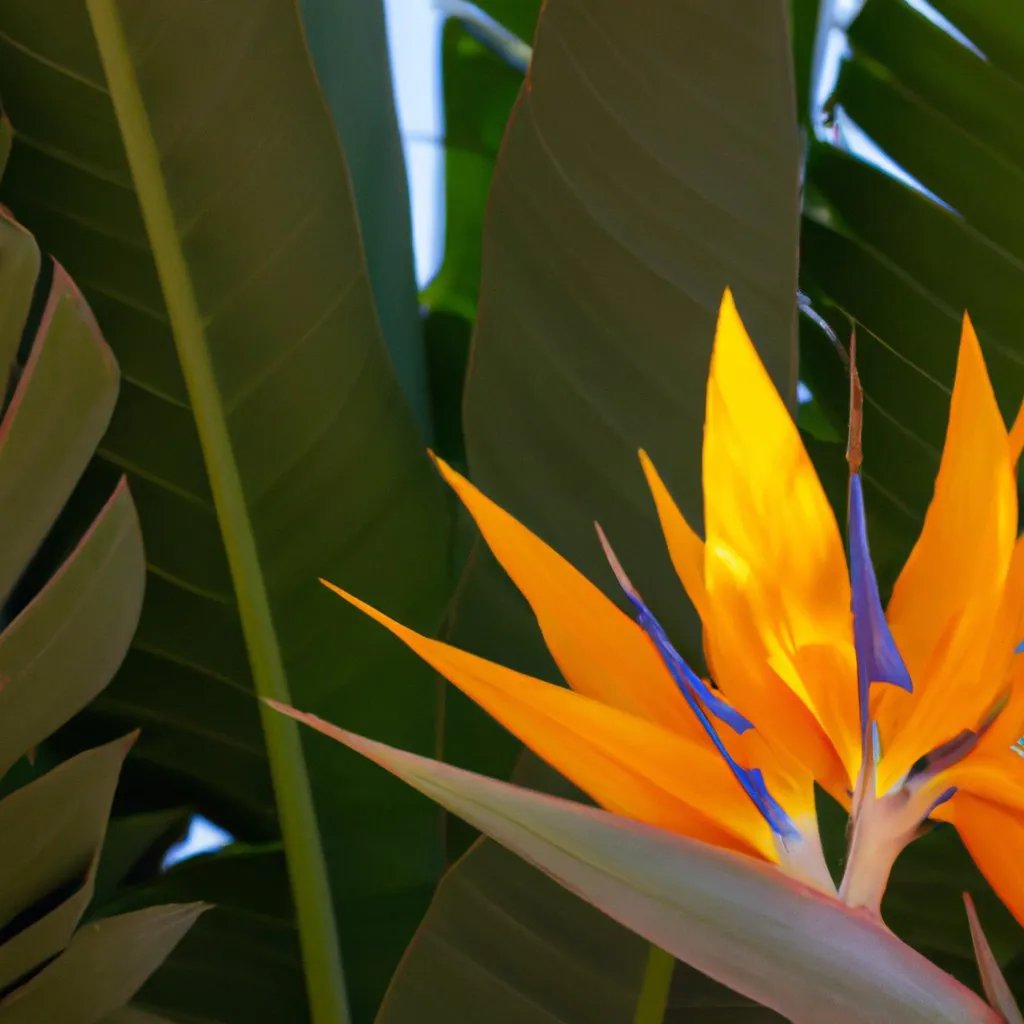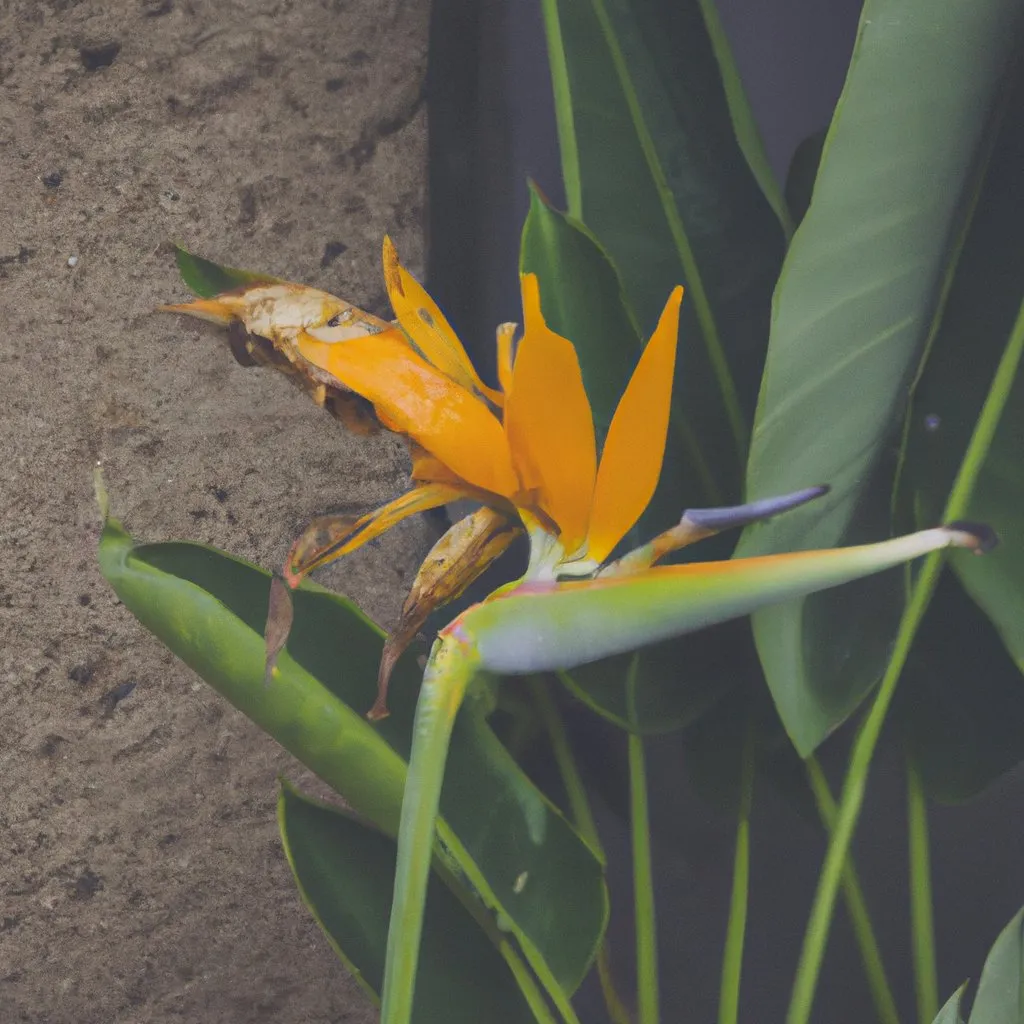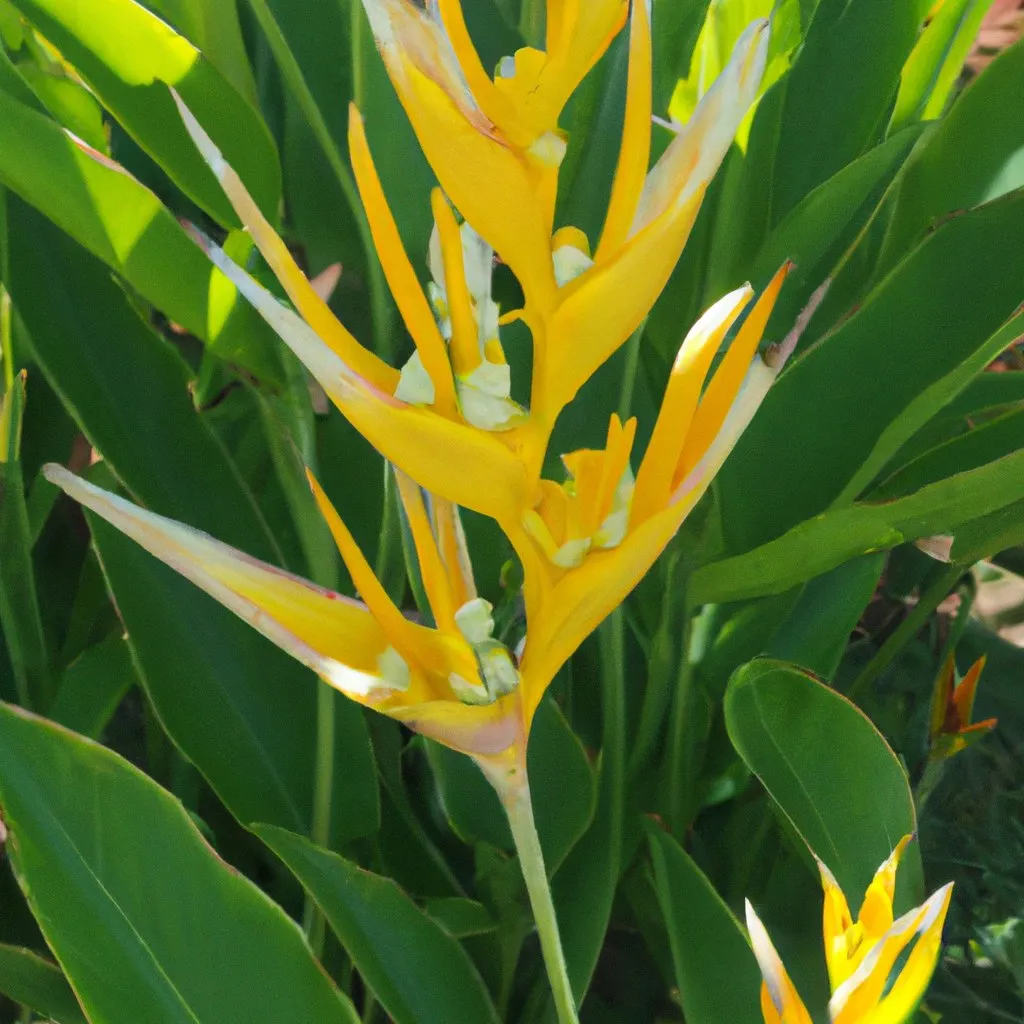-
Common name:
- Bird Of Paradise Yellow
- Regional name:
-
- Hindi: स्वर्गीय पक्षी का पौधा (Swargiya Pakshi ka Paudha)
- Tamil: பராடைச பறவை செடி (Paraatisa paravai chedi)
- Telugu: పారాడైస్ పక్షి మొక్క (Paaradais pakshi mokka)
- Malayalam: സ്വര്ഗ്ഗ പക്ഷി ചെടി (Swargga pakshi chedi)
- Kannada: ಸ್ವರ್ಗದ ಹಕ್ಕಿ ಸಸ್ಯ (Swargada hakki sasya)
- Bengali: হেমন্তি পাখির গাছ (Hemanti pakhi'r gach)
- Gujarati: પરાદીસ પક્ષી છોડ (Paradise pakshi chod)
- Marathi: स्वर्गीय पक्षी वृक्ष (Swargiya pakshi vrksha)
- Punjabi: ਸਵਰਗ ਦੇ ਪੰਖੀ ਦਾ ਬੂਟਾ (Svarg de pankhī dā būṭā)
- Regional name:
- Marathi - Pivla Bop
- Category:
- Family:
-
Overview
The Bird of Paradise Yellow plant, or Strelitzia reginae 'Mandela's Gold,' is a stunning tropical plant known for its exotic and vibrant yellow flowers that resemble a bird in flight. This unique plant is native to South Africa and thrives in warm climates. It adds an eye-catching element to gardens and landscapes, making it a popular choice for both amateur and professional gardeners.
Plantation
- Location: Choose a location with full sun or partial shade for your Bird of Paradise Yellow plant. It requires at least 4-6 hours of direct sunlight per day for optimal growth.
- Soil: Plant your Bird of Paradise in well-draining, rich soil with a pH between 6.0 and 7.5.
- Spacing: Space the plants approximately 6 feet apart to give them enough room to grow and spread.
- Planting: Dig a hole that is twice the size of the root ball, place the plant in the hole, and fill it with soil. Water thoroughly to help the roots settle.
Growing
- Watering: Water your Bird of Paradise Yellow plant regularly, ensuring the soil remains consistently moist but not waterlogged.
- Fertilizing: Apply a balanced, slow-release fertilizer during the growing season to promote healthy growth and vibrant blooms.
- Mulching: Add a layer of organic mulch around the base of the plant to help retain moisture and regulate soil temperature.
- Pruning: Remove dead or damaged leaves and flowers to encourage new growth and maintain a tidy appearance.
Care
- Pest control: Inspect the plant regularly for pests such as spider mites, aphids, and whiteflies. Treat infestations with insecticidal soap or neem oil.
- Disease prevention: Ensure proper air circulation and avoid overwatering to prevent fungal diseases. Remove and discard any infected plant material immediately.
- Winter protection: In cooler climates, move potted plants indoors or provide protection with frost blankets to prevent damage from freezing temperatures.
Benefits
- Aesthetic appeal: The striking yellow flowers and lush foliage of the Bird of Paradise Yellow plant add a touch of the tropics to any garden or landscape.
- Low maintenance: With proper care, this plant is relatively easy to maintain and is resistant to most pests and diseases.
- Attracts pollinators: The vibrant flowers attract birds, bees, and butterflies, promoting biodiversity in your garden.
- Air purification: Like many plants, the Bird of Paradise Yellow can help improve air quality by absorbing pollutants and releasing oxygen.

















